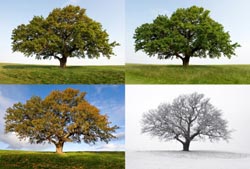Seasonal Hair Loss
Seasonal hair loss is a type of reversible hair loss, mainly noticed in spring and autumn. Instead of losing 50 to 100 hairs a day, which is the normal rate of hair loss, one can observe increased hair loss especially in the beginning of autumn.
Actually, hair loss does not exceed the physiological rates; in fact, while on average throughout the year it ranges close to the lowest limit (50 hairs a day), during the periods of seasonal hair loss it meets the upper limit (100 hairs a day), bringing about an increase in hair loss.
Although the precise causes of seasonal hair loss have not all been completely elucidated, research can provide a scientific explanation: Seasonal hair loss is concerned with the action of prolactin and melatonin levels in the human body, which cause hair life cycle to change. The variations in solar rays’ intensity have an impact on melatonin’s secretion in the human body and on the hormonal proportions by extension.
The seasonal effects of the environment in many cases have a significant impact on hair follicles. For instance, in North Countries, increased hair loss is usually observed in November.
Seasonal hair loss shouldn’t be a reason of particular concern, as it is a reversible phenomenon and lasts approximately 2 months. In case hair loss persists, further diagnosis should take place.


